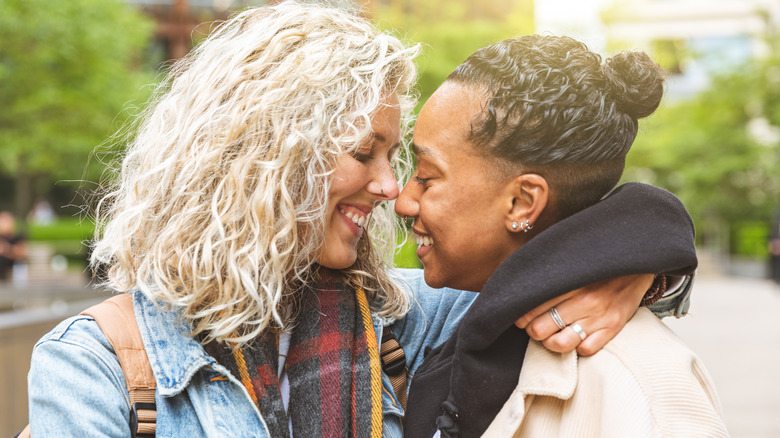Changing Your Attachment Style: How To Go From Anxious To Secure
Almost everyone has experienced insecurity in their romantic relationships at some point, but if you regularly feel anxious about your love life, your attachment style may be to blame. According to The Attachment Project, people first develop attachments in childhood. Depending on how effectively the child bonds with their caregiver, their attachment may be considered either secure, anxious, avoidant, or disorganized. These four styles often carry over into adulthood, where they play out in intimate relationships with romantic partners.
Often, people who experience intense emotional highs and lows and fear being rejected or abandoned have an anxious attachment style. Anxiously attached types might be labeled "overly sensitive" or "needy," but their feelings and behaviors are often deeply rooted in past experiences.
If you tend to form anxious attachments in your relationships, you're not alone: A 1987 study published in the Journal of Personality and Social Psychology found that about 20% of the population has an anxious or ambivalent attachment style. Though anxiously attached partners are capable of creating healthy relationships, they may struggle more compared to their secure counterparts. Thankfully, it's possible to swap your anxious attachment style for a secure one — but it can take some work. Here's how to make the transition.
Start with your personal habits and beliefs
Replacing an anxious attachment style with a secure one first requires understanding what a secure attachment really is. HelpGuide.org explains that secure individuals feel comfortable in close relationships, though they thrive when independent too. They honor their personal needs by setting clear boundaries that allow them to create fulfilling connections with others, without sacrificing themselves. They also welcome collaboration and open communication, and they tend to look for support from loved ones.
Adopting these behaviors won't happen overnight, but practicing one at a time, such as learning to say "no" or asking for what you need in a relationship, can be a good starting point. Medical News Today also notes that self-esteem is at the center of secure attachments. Reflect on your unique strengths and accept your weaknesses as they are (after all, no one is perfect, and your partner shouldn't expect you to be). Though it can be easier said than done, believing that you are worth loving just as you are can help ease your fears of being rejected or abandoned.
When those fears do arise, pause and notice what triggered them. Anxiously attached partners may react to their worries in destructive ways, such as by making empty threats or repeatedly calling a partner's phone. Wait before taking action until you've had a chance to self-soothe. If your anxious thoughts continue to linger, consider working with a therapist to learn new thought patterns and coping strategies.
Choose your partners carefully
Though you can change your attachment style on your own, the wrong partner can sometimes derail your progress. For anxious types, that person could be someone with an avoidant attachment style. As attachment expert Briana MacWilliam explains, anxious and avoidant partners tend to be attracted to each other, yet they have opposing needs in relationships. For example, if you ask for extra reassurance after an argument, an avoidant partner may feel smothered by this request. The result: Your anxious worries may be exacerbated, making it more difficult to form the secure bond you crave.
The best model for how to become more secure is a partner who's already securely attached. "A relationship between an anxious and secure person will work really well," Holly Roberts, a counselor at Relate, explained to Cosmopolitan. However, remember to learn from your secure counterpart, rather than simply falling into familiar habits. "The secure partner will be able to provide the security and assurance that the anxious partner needs, but they might struggle to do this on a long-term basis and their partner's 'neediness' may become too much to manage," Roberts added.
When dating a securely attached person, be sure to also give yourself some grace. Your relationship history and even childhood may be much different from theirs. It's okay if it takes time to unlearn your old ways and adopt a new attachment style.


